Potřebujeme váš souhlas k využití jednotlivých dat, aby se vám mimo jiné mohly ukazovat informace týkající se vašich zájmů. Souhlas udělíte kliknutím na tlačítko „OK“.
ASTM E2489-11
Standard Practice for Statistical Analysis of One-Sample and Two-Sample Interlaboratory Proficiency Testing Programs
Automaticky přeložený název:
Standardní praktiky pro statistickou analýzu One-sample a dvouvýběrové mezilaboratorní Zkoušení programy
NORMA vydána dne 1.10.2011
Informace o normě:
Označení normy: ASTM E2489-11
Poznámka: NEPLATNÁ
Datum vydání normy: 1.10.2011
Kód zboží: NS-45416
Počet stran: 13
Přibližná hmotnost: 39 g (0.09 liber)
Země: Americká technická norma
Kategorie: Technické normy ASTM
Kategorie - podobné normy:
Anotace textu normy ASTM E2489-11 :
Keywords:
collaborative study, collaborative trial, interlaboratory comparison, proficiency testing, ICS Number Code 71.040.40 (Chemical analysis)
Doplňující informace
| Significance and Use | ||||||||||||
|
This practice is specifically designed to describe simple robust statistical methods for use in proficiency testing programs. Proficiency testing programs can use the methods in this practice for the purpose of comparing testing results obtained from a group of participating laboratories. The laboratory comparisons can then be used for evaluation of individual laboratory performance. In addition, the data obtained in proficiency testing programs may contain information regarding repeatability (within-lab) and reproducibility (between-lab) testing variation. Repeatability information is possible only if the program uses more than one sample. See Method B. Proficiency testing programs often have a greater number of participants than might be available for conducting an interlaboratory study to determine the precision of a test method (such as described in Practice E691). Precision estimates obtained for the larger number of participants in a proficiency testing program, along with the corresponding wider variation of test conditions, can provide useful information to standards developers regarding the precision of test results that can be expected for a test method when in actual use in the general testing community. To estimate the precision of a test method, the participants must use the same test method to obtain their test results, and testing must be performed under the conditions required for repeatability and reproducibility. The precision estimates are applicable to the property levels and material types included in the testing program. The precision of a test method may vary considerably for different material types and at different property levels. This practice may be useful to proficiency testing program administrators and provides examples of statistical methods along with explanations of some of the advantages of the suggested methods of analysis. The analyses resulting from the application of methods described in this practice may be used by laboratories as part of their quality control procedures, accrediting bodies to assist in the evaluation of laboratory performance, and ASTM International technical committees (and other organizations charged with the task of writing, maintaining, or improving test methods) to obtain information regarding reproducibility and repeatability. There are many types of proficiency testing programs in existence and many methods exist for analyzing the data resulting from the interlaboratory testing. It is not the intention of this practice to call into question the integrity of programs using other methods of analysis. Testing programs using replicate testing of one or more samples (each laboratory submits two or more results for each sample) are directed to Practice E691 or other practices for the description of a method of analysis that may be more suitable to that type of program. |
||||||||||||
| 1. Scope | ||||||||||||
|
1.1 This practice describes methods for the statistical analysis of laboratory results obtained from interlaboratory proficiency testing programs. As in accordance with Practice E1301, proficiency testing is the use of interlaboratory comparisons for the determination of laboratory testing or measurement performance. Conversely, collaborative study (or collaborative trial) is the use of interlaboratory comparisons for the determination of the performance characteristics of a method, as covered by Practice E691. 1.1.1 Method A covers testing programs using single test results obtained by testing a single sample (each laboratory submits a single test result). 1.1.2 Method B covers testing programs using paired test results obtained by testing two samples (each laboratory submits one test result for each of the two samples). The two samples should be of the same material or two materials similar enough to have approximately the same degree of variation in test results. 1.2 Methods A and B are applicable to proficiency testing programs containing a minimum of 10 participating laboratories. 1.3 The methods provide direction for assessing and categorizing the performance of individual laboratories based on the relative likelihood of occurrence of their test results, and for determining estimates of testing variation associated with repeatability and reproducibility. Assumptions are that a majority of the participating laboratories execute the test method properly and that samples are of sufficient homogeneity that the testing results represent results obtained from each laboratory testing essentially the same material. Each laboratory receives the same instructions or protocol. 1.4 This standard does not purport to address all of the safety concerns, if any, associated with its use. It is the responsibility of the user of this standard to establish appropriate safety and health practices and determine the applicability of regulatory limitations prior to use. |
||||||||||||
| 2. Referenced Documents | ||||||||||||
|
Podobné normy:
Historická
1.9.2012
Historická
1.3.2010
Historická
1.4.2008
Historická
1.3.2014
Historická
15.6.2012
Historická
1.9.2012
Doporučujeme:
Aktualizace technických norem
Chcete mít jistotu, že používáte pouze platné technické normy?
Nabízíme Vám řešení, které Vám zajistí měsíční přehled o aktuálnosti norem, které používáte.
Chcete vědět více informací? Podívejte se na tuto stránku.


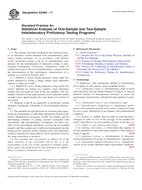
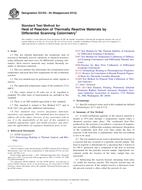 ASTM E2160-04(2012)..
ASTM E2160-04(2012)..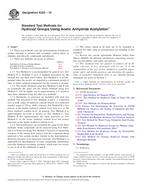 ASTM E222-10
ASTM E222-10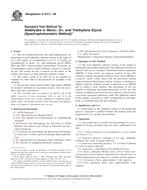 ASTM E2313-08
ASTM E2313-08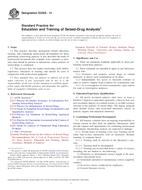 ASTM E2326-14
ASTM E2326-14 ASTM E2330-12
ASTM E2330-12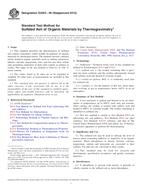 ASTM E2403-06(2012)..
ASTM E2403-06(2012)..
 Cookies
Cookies
